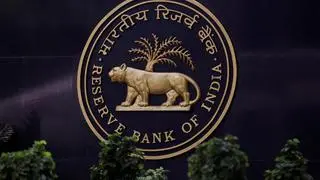Coal Minister Pralhad Joshi on Tuesday took stock of India’s coal production and dispatch after the country clocked a peak power demand met during the day of 226 gigawatts (GW) with peak shortage of 9.1 GW and generation outage of 51.65 GW a day earlier.
“In view of the surge in power demand across the country, took stock of coal production and offtake in a meeting with senior officials of @CoalMinistry. The country has sufficient coal stock, almost 80 mt coal is available with thermal power plants and @CoalIndiaHQ,” Joshi tweeted.
According to the National Power Portal, the pan-India coal stocks at domestic coal based (DCB) plants stood at 29.7 million tonnes (mt), which is sufficient for 11.4 days. The stocks at imported coal based (ICB) plants stood at 1.95 mt, sufficient for 11.5 days, as on August 21. On the same day, the number of DCB plants with critical stock stood at 28, while for ICB plants it was eight.
Indicating that there is shortage of coal at power plants, a senior government official said that this entire quantity of 80 mt (at power plants and CIL pitheads) is not “readily available” to power plants. A comfortable position for coal reserves would be around 32-35 mt. “The Ministries of Power, Coal and Railways are coordinating to ensure there is not shortage,” the official added.
During the meeting, also deliberated on boosting coal transportation via rail-sea-rail (R-C-R) route. Strategised infrastructure development in view of enhanced demand for R-C-R mode of coal supplies, the Minister added.
India’s peak power demand surpassed the Power Ministry’s estimate of 229 GW on August 16, August 17 and August 18, when the demand met during the day rose to 233 GW, 234.1 GW and 231.6 GW, respectively.
Power consumption
India’s rising power consumption surpassed all previous estimates during August on account of a deficit monsoon, particularly in Central, South and North West India, as well as higher humidity levels, which led to a significant up-tick in the average cooling hours.
According to the India Meteorological Department (IMD), the pan-India rainfall deficit during August stood at 37 per cent as on August 21. Monsoon deficit in Central India stood at 36 per cent, while that in North West and South India was 46 per cent and 64 per cent, respectively.
Between August 12 and August 21, the pan-India peak demand met during the day averaged at almost 225 GW, while the peak shortage averaged at around 3.80 GW.
A senior government official explained that rising heat index coupled with humid weather led to higher demand for cooling thereby reflecting on the record high consumption. There is higher demand from Central, North and South India.
Besides, the days which registered record high consumption also registered peak shortages. For instance, the peak demand met on August 17 was 234.1 GW with a peak shortage of 7.26 GW.
Similarly, on August 16, with a peak demand met of 233 GW, the peak shortage was 5.92 GW and on August 18, when the peak demand met stood at 231.6 GW, the shortage was 4.21 GW.
Furthermore, the pan-India generation outage on August 16 and August 17 stood at 48.94 GW and 52.22 GW, respectively.
The record high consumption and deficit also reflected in the high prices for procuring electricity at power exchanges. For instance, at the Indian Energy Exchange (IEX), the average market clearing price on August 20 was ₹6.9 per unit, which rose to around ₹8 per unit a day later, and then went further north to ₹9.4 a unit on August 22.







Comments
Comments have to be in English, and in full sentences. They cannot be abusive or personal. Please abide by our community guidelines for posting your comments.
We have migrated to a new commenting platform. If you are already a registered user of TheHindu Businessline and logged in, you may continue to engage with our articles. If you do not have an account please register and login to post comments. Users can access their older comments by logging into their accounts on Vuukle.